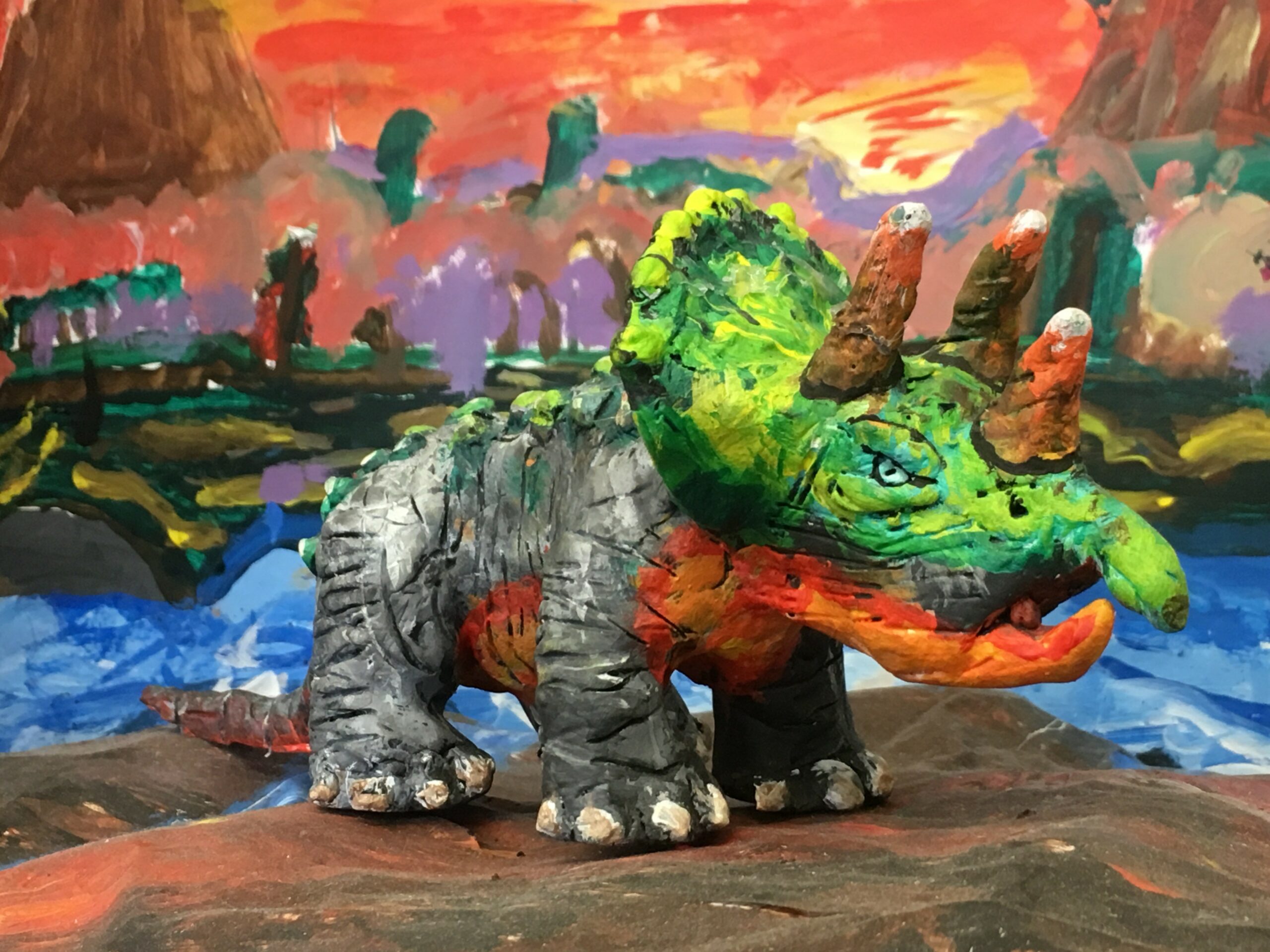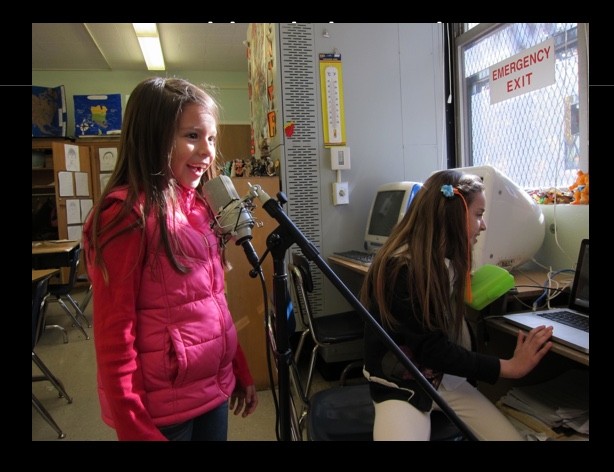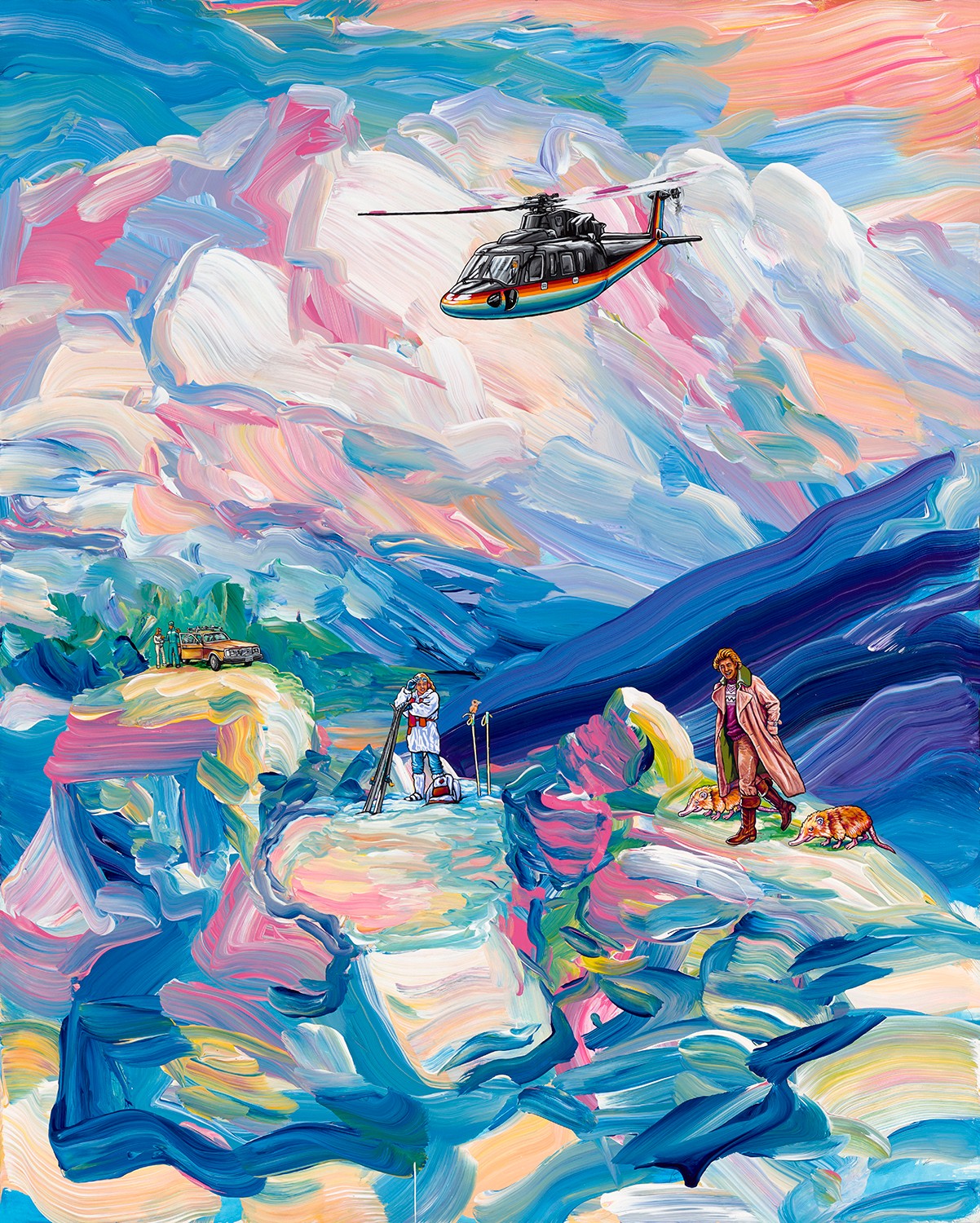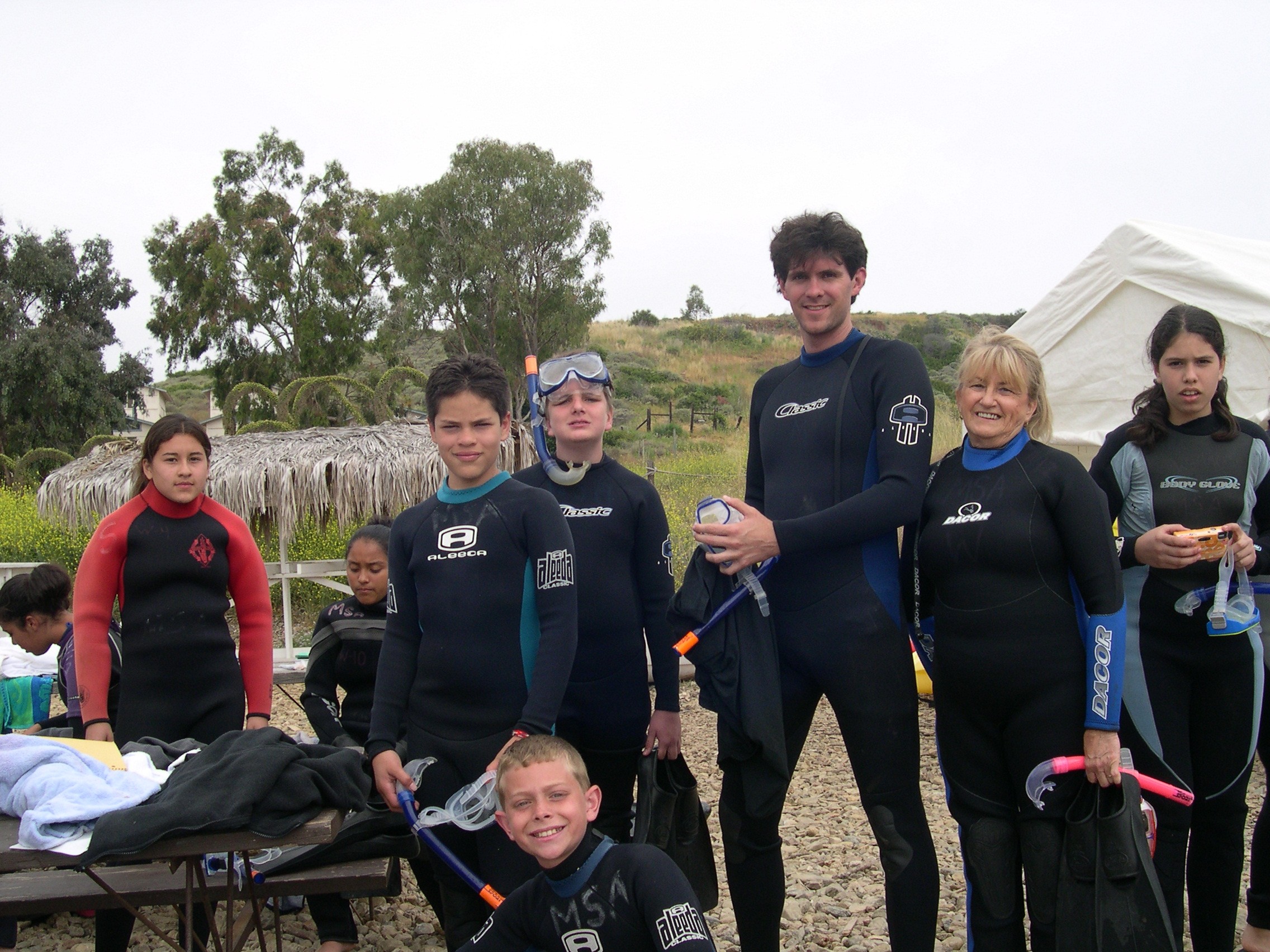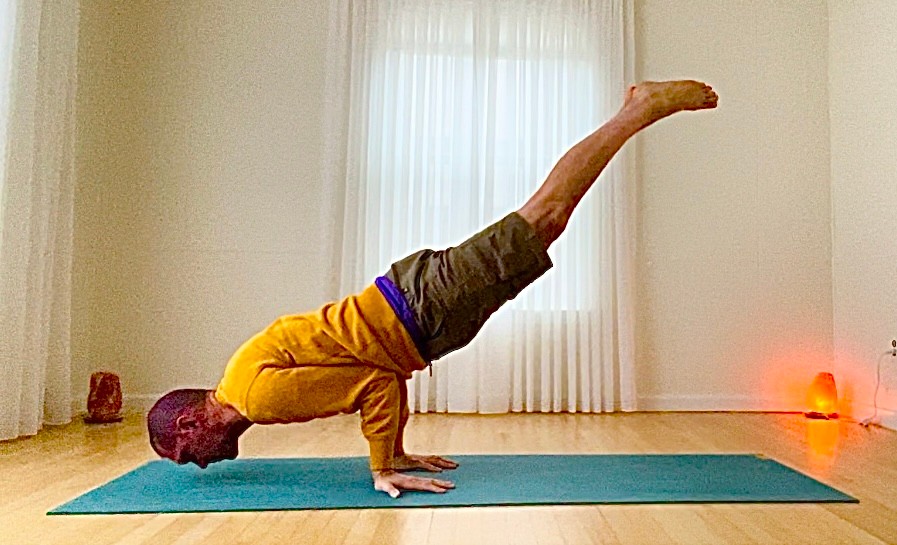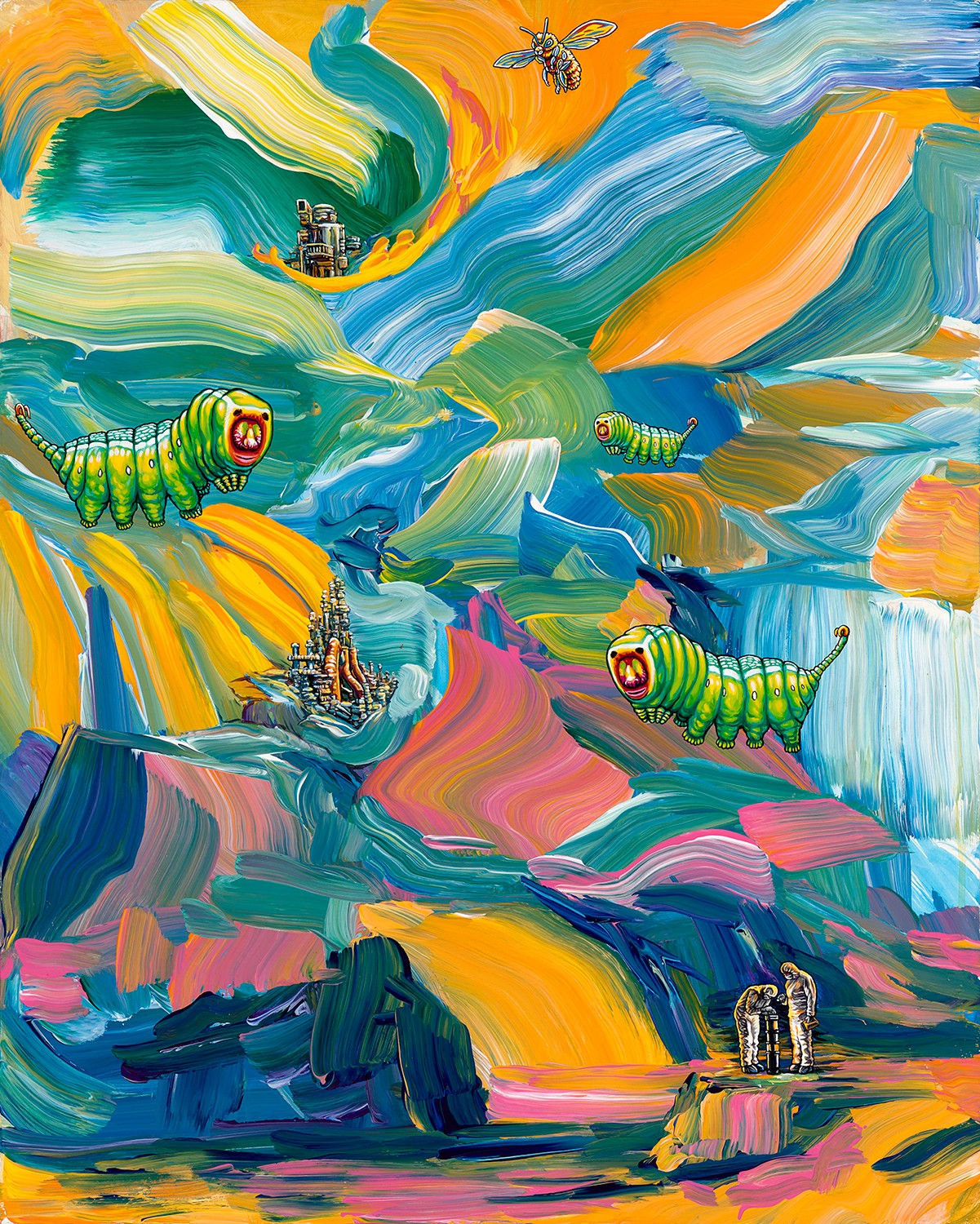We’re excited to introduce you to the always interesting and insightful Mike Christy. We hope you’ll enjoy our conversation with Mike below.
Hi Mike, really happy you were able to join us today and we’re looking forward to sharing your story and insights with our readers. Let’s start with the heart of it all – purpose. How did you find your purpose?
Note: Though I discuss work I have done for the Los Angeles Unified School District, YogaMedics, and the Veterans’ Affairs Administration, I am not speaking here as a representative of either of those organizations.
Like many people, I have more than one purpose in life. I have maintained three serious practices in my life: Art, Yoga, and Environmental Advocacy. At different times in my life different purposes have taken priority, but all of them consistently weave together, nurturing each other. The skills I have developed in each practice have made the others stronger.
The first calling I felt strongly was to make art. This impulse dominated my childhood, teens, and early twenties and has been an important aspect of who I am throughout my entire life. It came naturally, without any consideration. Making art was just the thing I enjoyed doing more than anything else. I also loved looking at art and was blessed with parents who bought me comic books, took me to movies, and bought me action figures that allowed me to create my own narratives. I loved the covers of pulp science fiction books I checked out from our town library. I often would not read the book, preferring to create my own story based on the cover painting. The art I make now continues to play with narrative imagery.
I studied art in college and began showing my art afterwards, however public exhibition of my art would soon take a backseat to the next purpose I felt called to undertake, environmental activism.
As a child in the 1980s I became aware of human impacts on the ecosystem, including the hole in the ozone layer, global warming, and the fact that human activities were driving many species of animal to extinction. I had always had a fondness for animals and a fascination with extinct species such as dinosaurs, so mass-extinction was the environmental issue that concerned me the most. Even then I understood that global warming and pollution could lead to more extinction events, perhaps even the extinction of humans.
As an undergraduate art student in the early 1990s, I happened to take a geoscience survey course with Dr. Richard Alley. I didn’t know it when signing up for the course, but Dr. Alley was an eminent climate scientist, whose groundbreaking work drilling ice cores to study previous climatic changes and use the data to predict future ones would later earn him (as a contributor to the United Nations Intergovernmental Panel on Climate Change) a shared Nobel Prize with Al Gore in 2007. Dr. Alley shared his work drilling ice cores with his students and impressed upon us the dire consequences that would result if climate change was not checked in the next two decades or so: Sea level rise, loss of habitable land, famine, increased conflicts over limited resources that would lead to increasing numbers of refugees, and ultimately mass extinction.
At the time I was in Dr. Alley’s class I felt comfortable that world leaders would quickly solve this problem. After all, we already had all the solutions we needed. Solar power, wind power, and other sustainable energy sources already existed to replace fossil fuels. They just needed to be scaled up. Many people were already adopting a vegetarian diet due to the health issues stemming from eating meat, so it seemed reasonable that a societal shift away from a carbon-heavy meat diet could occur over the next two decades. And in the 1980s world governments had quickly responded to the crisis of the disappearing ozone layer by cooperating to reduce the use of hydrochlorofluorocarbons and other ozone-depleting gases. My optimistic young self thought that cooperation to reduce the use of fossil fuels and emissions from food animal herds could be accomplished just as easily.
My optimism waned as I observed some troubling trends throughout the next few years. After classes at Penn State I would see dozens of recyclable bottles in trash bins while a recycling bin was literally inches away. I would often go from classroom to classroom picking recyclables out of the trash and putting them in the correct bin. It bothered me that people were so environmentally unaware that they couldn’t be bothered to make a choice that was equally easy. Even more troubling was that some members of my own family, having fallen under the influence of right-wing demagogues such as Rush Limbaugh, dismissed the seriousness of stopping climate change and even began to mock concern about the climate. When the U.S. failed to ratify the Kyoto Protocol on Climate Change in 1997 because of Republican objections in the House of Representatives I became quite concerned that world governments may not cooperate to stop climate change in the window of time left to do so.
Then came the 2000 U.S. Presidential election. Democrat Al Gore, a champion for climate action was forced to concede the election (despite actually winning both the popular vote and electoral college) to climate denier and fossil fuel heir George W. Bush thanks to the shenanigans of a majority of partisan Republicans in the Florida government (controlled by Bush’s brother, FL Governor Jeb Bush) and the Supreme Court. Equally disturbing was that enough Americans believed the false climate narrative spun by Bush to make the vote count close enough for this to happen (3rd Party spoiler candidate Ralph Nader, who was ironically seen as “more progressive” also syphoned off votes from Gore.). Bush would use the vast power of the U.S. government to delay any action to stop climate change for at least the next four years.
The 2000 election was a major turning point toward my second purpose. In the 1990s I thought that the environmental themes in my art might be able to promote environmental consciousness, but the events of that decade caused me to realize that even if that could happen, there was not time. I was not a famous artist and was unlikely to be anytime soon. I also realized that making the type of paintings that I make and showing them in a gallery or teaching at a college would likely be a form of “preaching to the converted”; artists and their audience tend towards progressive politics so they probably already were on board with stopping climate change. I also understood that there are lots of other artists who aspire to show their art in galleries and be an art professor so I decided that it wasn’t really necessary for me to follow that path. Instead I decided to insert my creativity into a sector that I thought could use it more: Public Education. I decided that I would do my best to warn my community about the urgent dangers of climate change, and decided that teaching in a local elementary school would be the most efficient way to do it.
In 2000 I accepted a job as an elementary school teacher in Los Angeles, a position I would keep for the next 18 years. There was no curriculum on climate change being taught in schools at this time so I created one. I used art and environmental education as a thematic connection between all the curricular areas that I was required to teach. Students learned language arts, math, social studies, and science through inquiry- and project-based learning experiences such as making paintings, sculptures, stop-motion films, recording songs with GarageBand and making accompanying music videos. These projects also provided a great way to include their parents and get the whole school community involved in promoting environmental activism. Students used their art as fundraisers to raise money to purchase acres of rainforest for preservation and to donate to various environmental non profit groups. These projects raised the environmental awareness of the entire school community. The last project my class completed before I left my teaching position was to build bat houses for distribution around Northeast Los Angeles, including at the Audubon Center at Debs Park.
My students learned a lot during my class. The way I was teaching, including so much art, and using so many projects ran contrary to the standardized-test paradigm that the Bush Administration pushed in the 2000s. In order for me to continue to have the right to manage my classroom in such an unorthodox way, my students needed to also succeed on their standardized tests. And they did! It turned out that what I was doing in my classroom actually aligned very well with research on differentiated instruction for gifted learners. My classroom also proved that the principles of differentiated instruction should be applied to ALL students in order for them to achieve the most meaningful learning possible. The strong results in my classroom enabled me to share my environmental teaching techniques at a number of Gifted and Talented Education conferences and for many years I taught professional development courses to other teachers on how to integrate environmentalism with other curricula via the arts.
In 2018 I moved from Los Angeles to Detroit, MI where my partner had accepted a new job. My artistic and environmental callings of course came with me. We were able to buy a house on 1/3 acre in suburban Detroit and I created a new painting studio and set about replacing the vast swaths of useless lawn with native plants. It has been my hope that seeing the beauty and ecological value of Michigan’s native plants will inspire others to do the same. If the vast acreage of suburban lawns could be transformed back into native plant habitats to support wildlife it would go a long way in mitigating the crisis of biodiversity that we face. When we moved, however, I decided that 18 years of teaching elementary school was enough. Instead I decided to move into my third purpose: Yoga Therapy.
I have flat feet and idiopathic scoliosis. During college, in my early twenties, I began to experience terrible pain in my low back and hips. It was sometimes debilitating. I couldn’t sleep lying down and when I walked it felt like a knife was stabbing into my hip socket. I was otherwise in good shape; I lifted very heavy weights a lot and rode my bike everywhere, but I was in a lot of pain. I tried chiropractic treatments, a firmer mattress, a TENS unit, and orthotics in my shoes, but nothing really helped.
During my final year of college my girlfriend wanted to take a yoga class to fulfill a Phys. Ed. credit so I joined her, thinking it would be easy relative to the exercise I was already doing. This class was the first time yoga was offered as a course at Penn State and it was taught by an Iyengar Certified teacher named Dean Learner. I found absolutely nothing easy about yoga but did find that the more I practiced it my pain started to get better. I realized that if I was already in this much pain in my twenties, I was in for a very painful old age if I didn’t keep practicing yoga. After the fall semester course the entire class pleaded with Mr. Learner to offer “Yoga II” in the Spring Semester. He did and we all signed up again. Yoga is probably the only thing in my life that I stuck with even though I wasn’t initially good at it, and I never expected that I would eventually be qualified to teach it.
Over the years I continued to practice yoga, not as something to monetize, but purely as a personal practice (although I did teach daily yoga to my elementary school students as part of my PE and behavior management strategies). My purely personal yoga practice helped me to remember what I knew in childhood, that my art practice could also be purely personal despite art schools’ emphasis on showing one’s art; my yoga practice kept me painting daily while teaching elementary school with no effort to exhibit my paintings. Yoga helped me in many other ways too. For many years I only had one yoga text, Yoga the Iyengar Way, from my college classes. There is an appendix at the back of this book listing yoga poses for therapeutic applications. I used this appendix to cope with a wide variety of challenges I faced ranging from anxiety and depression to plantar fasciitis.
By my 40s I had completely rid myself of the back and hip pain that had plagued me in my twenties. I had increased the arches in my feet and hadn’t bothered with orthotics in many years. I had increased my kinesthetic intelligence and also deepened my sense of spirituality that had waned in my early teens due to coerced religious participation. As I got older I began to realize that many of my friends were experiencing back, neck, and other chronic pain as well as problems with depression and anxiety. I encouraged them to try yoga. I also began to realize that maybe, having worked through so many of these issues myself with yoga, I actually should start teaching it to others. I also realized that while I had given art and environmental teaching status as my primary calling, I had not yet done this for yoga. Entering my mid-40s, I felt I would never again have a more optimum time to fully dive into my asana practice.
So, upon moving to Detroit, I started teaching yoga. I expanded my Yoga Alliance certifications to include two 200 hour Certificates and two 300 hour certificates, one of each in studio yoga and one of each in yoga with therapeutic applications. I also earned a certification as a Yoga Therapist from the International Association of Yoga Therapy. I was hired by YogaMedics to teach therapeutic yoga to private clients, many of whom had been seriously injured in car accidents. In 2019 I began teaching yoga at the Pain Clinic at the John D. Dingell VA Medical Center, where YogaMedics held a Federal Contract to provide yoga services.
Sharing yoga with Veterans and other people with pain has become my third calling.
I currently work full time for the Pain Clinic at the John D. Dingell VA Medical Center and teach private and public yoga and yoga therapy sessions. I love teaching at the VA where I get to share yoga with people from communities who haven’t traditionally had access to yoga in the United States. I feel fortunate to now be an ambassador for an ancient technology that has been so beneficial to me in my own life. The skills I learned as an artist, especially how to see, not just literally observe, but also to see deeper truths and to understand narratives, are vitally important to my work as a yoga therapist. Equally vital is the work I did as a teacher that honed my ability to share information efficiently and effectively, get along well with people with different backgrounds and perspectives, and make learning fun. My environmental activism continues as my native plant garden serves as my outdoor yoga studio. When students practice there, they not only get the benefits of yoga, but are inspired by the natural beauty of the place they live and hopefully encouraged to nurture nature at their own homes.
As I approach my 50th birthday, I feel like I’m in a good place where all three major purposes in my life are intersecting. There are still times when one gets priority and another can feel shortchanged, but taking a long view of life assures me that they will all be balanced out. In this way life itself is very much like the yoga pose Vrksasana (tree pose). You don’t remain perfectly still in a state of balance for long. The pose is constantly an effort to shift across the balance point without going too far out of balance. With practice you remain in a state of balance for longer. In life, the longer you nurture multiple practices, the more you feel balanced even when shifting your attention from one purpose to another.
Thanks for sharing that. So, before we get any further into our conversation, can you tell our readers a bit about yourself and what you’re working on?
I mostly described this in my previous answer, but in addition to my work as a yoga therapist for the Detroit VA Pain Clinic, my services currently include:
Private yoga and yoga therapy sessions both in person and virtually
Semi-private recreational yoga classes in person and virtually
Consulting services for schools, teachers, and parents on Gifted and Talented Education and integrating the arts and environmentalism with curricula
Art sales
Anyone interested can contact me at Mikechristyarts@gmail.com or @mikechristyarts on Instagram.
Also, I think captions for the photos I’ve uploaded would be helpful for your readers:
1. I led 6th grade students on a yearly snorkeling field trip to Catalina Island to deepen their appreciation for the marvels of nature.
2. Students recording a song they had written to teach others about climate change using GarageBand. This was a yearly project in which students worked in teams to research and produce songs and music videos.
3. 2nd grade student extinct species sculpture and diorama. My climate change curriculum started with a unit on extinct species. Students researched an extinct species, wrote an essay about it and why it became extinct, and created a diorama of the animal and its habitat.
4. Film still from 2nd grade student stop-motion animation film on nitrogen/phosphorus pollution. In this yearly project students worked in teams to produce films explaining various environmental crises including nitrogen/phosphorus pollution, air pollution/climate change, habitat degradation and overfishing.
5. 2nd grade student endangered species painting and essay. The final project in my climate change curriculum was for students to research an endangered species, its habitat, its life cycle, its role in the ecosystem, why it was threatened, and what could be done to help it. They then created paintings that showed the animal, its habitat, and a threat to it.
6. A painting by me: Alpine Days (The Solenodon Man) 2017, acrylic on canvas
7. A painting by me: Quest 2017, acrylic on canvas
8. me doing some yoga
There is so much advice out there about all the different skills and qualities folks need to develop in order to succeed in today’s highly competitive environment and often it can feel overwhelming. So, if we had to break it down to just the three that matter most, which three skills or qualities would you focus on?
The three most important skills in my journey have been observing/critical thinking, diligent practice, and not valuing yourself based on someone else’s metric.
Learn to See: Practice meditation, drawing, or another practice that helps you to observe. Read a lot of news stories from different perspectives and look for underlying biases. Follow the money; see who benefits from a situation and who doesn’t. Critique in an honest way from a position of non-attachment.
Diligent practice: There is no substitute for doing. Whatever your practice is, keep doing it. Make the time. Balance your energy so you can do the things you need to do. Your practice doesn’t have to look the same everyday, but stay in it. If I don’t have the physical energy to do a vinyasa practice, I’ll do a yin practice or at least pranayama. If I don’t have the mental energy or a block of time to work on a painting, I’ll prep a canvas or at least sit and critique work in progress. If I’m not spending time on my own environmental activism, I’ll “like” others’ posts on Instagram to feed their energy to keep doing the important work moving our collective consciousness toward a sustainable future.
Don’t value yourself based on someone else’s metric: In art school critiques, sometimes professors or visiting artists would give advice and you’d realize they were trying to get you to make your art more like theirs. Commercial success in the art world does not always correlate with the quality of the art. In schools, success on standardized tests or lack thereof, is not a good metric of student intelligence for a variety of reasons. Students might achieve academic success by producing what a school system wants to see, but does that mean that something else might not be better? Yoga teachers may push students deeper into poses for the sake of the teacher’s ego rather than because it’s better for the student. What’s right for one body is not necessarily right for another.
When we work for someone we do have an obligation to produce results they want, because that’s what they’re paying us for. We do have an obligation to observe our work situation, think critically about it and decide if the goals of our employer align with what we ourselves consider successful in our work. If there is not alignment, then we should look elsewhere to pursue our purpose. Lack of success by someone else’s metric does not mean that you have failed in your purpose, it just means that if you can’t reckon your work with their expectations then maybe there is a better context for you to fulfill your purpose.
What is the number one obstacle or challenge you are currently facing and what are you doing to try to resolve or overcome this challenge?
The biggest challenge I face is managing time to maintain all three of my callings. I accomplish this by thinking of life as a “long game”. There was a time in my teens and twenties when my art was the main focus of my life and my yoga and environmentalism were secondary. Then environmental teaching took over as the central focus for years, while I still tried to maintain my art and yoga practice. Then there was a period in my 30s when I started showing my art a lot more often so my yoga practice took a back seat while art and environmentalism shared the role of primary practice. Eventually I was able to achieve a balance between my art practice, my environmental education practice, and my yoga practice for a time. But eventually, as I got deeper into my 40s I decided it was time to make my yoga practice my primary practice for the first time. I stopped teaching elementary school and became a professional yoga instructor and yoga therapist. Currently I see up to 60 clients/patients in a week which doesn’t leave as much time as I’d always like for my other two practices.
One of the principles I’ve come to embrace over nearly 30 years of practicing yoga is that of ishvarapranidhana or “laying it at the feet of god”. This yogic principle states that you should concern yourself with the quality of your actions but not with the fruits of your actions. It implies that there are things that are outside of our control and we should concern ourselves with the things we can control. It also suggests that there are forces larger than ourselves. I have found that by trusting the forces that are larger than me, things generally turn out well.
In order to manage my three callings, when life presents the opportunity for me to teach yoga, I teach yoga. When life presents the need to make art, I find that I have some time to make art. When it is time to work on my native plant restoration, I have found that my schedule opens for me to do that. Of course this isn’t just magic; I have to be paying attention and looking for opportunities and prepared to use my time well when it opens up. Looking for the openings and and opportunities is key, and looking is something that years of art and yoga practice make one good at. It’s also important to make even just a little bit of time for each practice daily.
Contact Info:
- Instagram: @mikechristyarts
- Other: email: mikechristyarts@gmail.com


